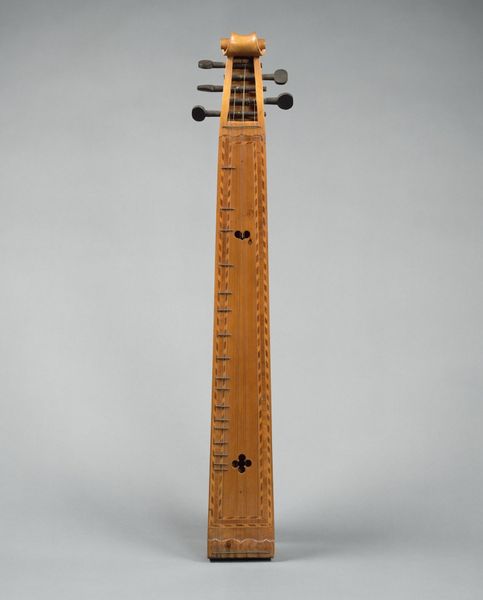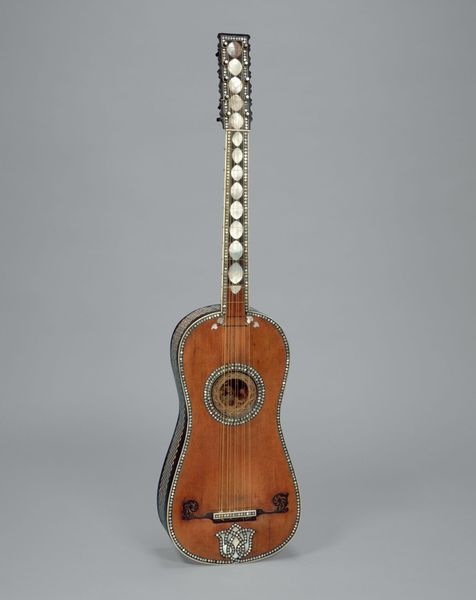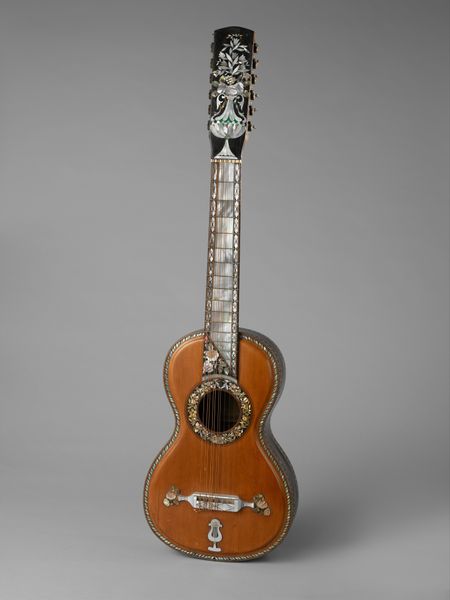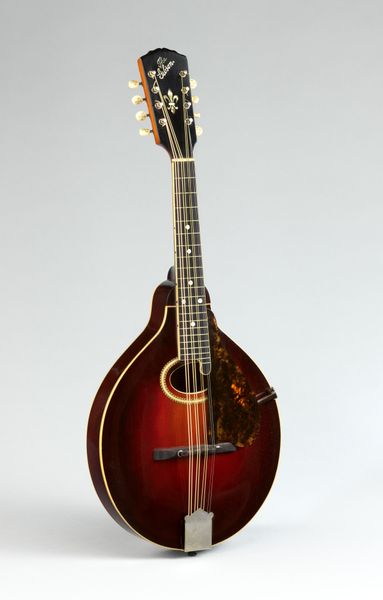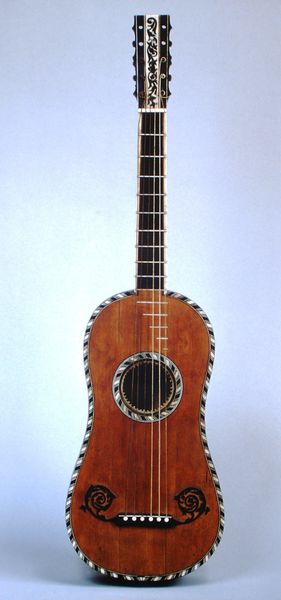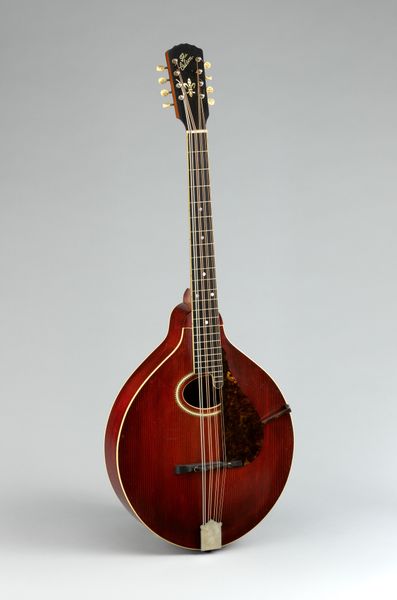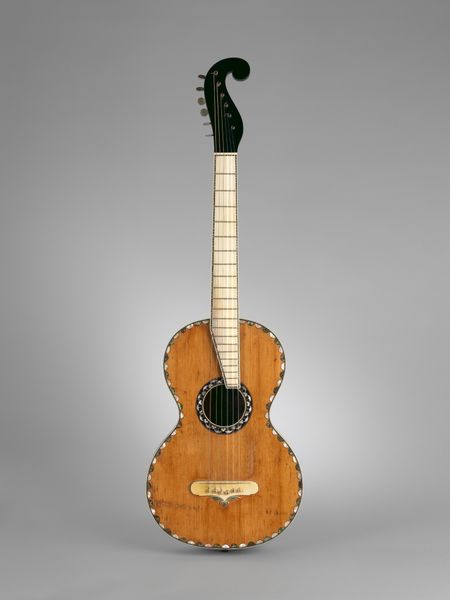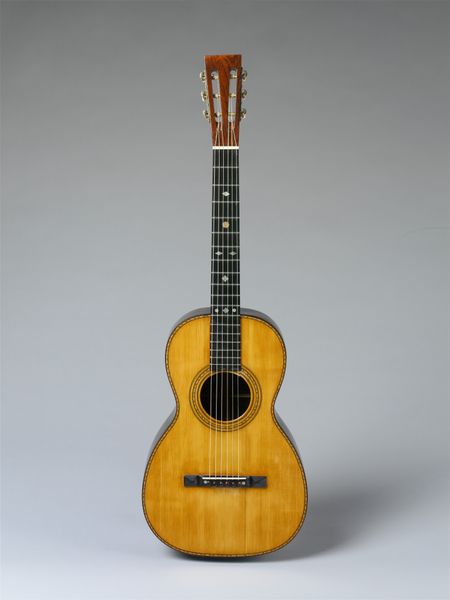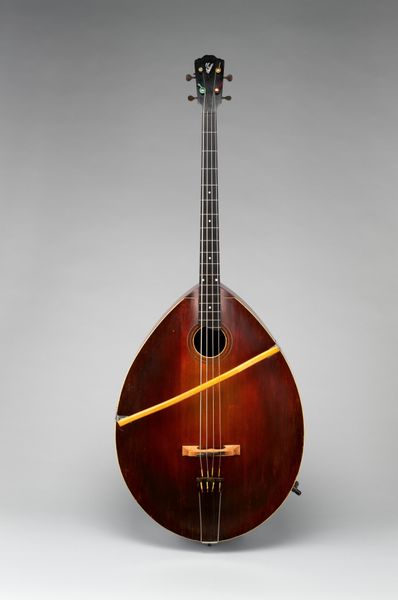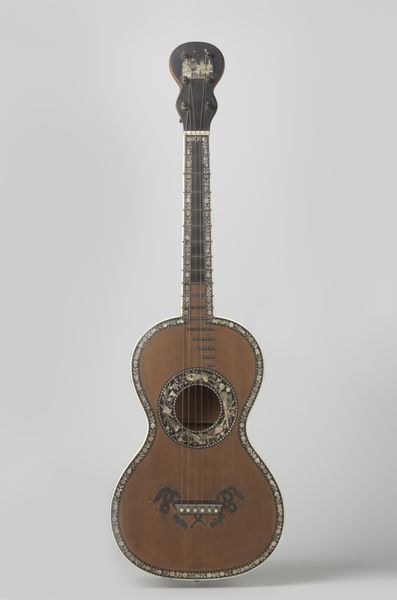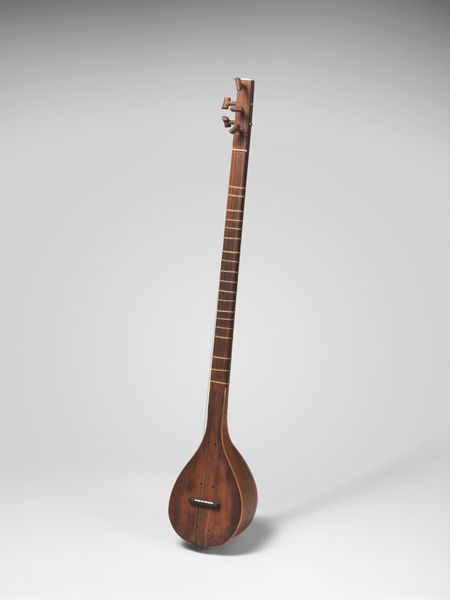
sculpture, wood
#
geometric
#
sculpture
#
wood
Dimensions: height 266.5 cm, length 11.2 cm, width 9 cm
Copyright: Rijks Museum: Open Domain
Editor: This is the "Model of a Made Mast," created around 1828 by Mauritzen. It's a wooden sculpture. I'm struck by the precision of the geometric divisions along its length. What story can you read from its structure? Curator: The story embedded within this object goes far beyond naval engineering. Consider the time: 1828. Colonial expansion was in full swing, powered by ships and their masts. This model isn't just an abstract object; it embodies the logistics and global networks of power and exploitation that were part of the colonial enterprise. What does it mean to 'make' a mast in this context? Editor: So, it’s about the construction process but also about the larger economic system? Curator: Precisely. The craftsmanship, while seemingly neutral, is directly tied to the exploitation of natural resources and labor from colonized lands. Who were the people cutting down these trees? Who profited? Thinking about the hands involved transforms it into a potent symbol of global inequity. Editor: That's a pretty powerful reading! So it's less about appreciating the skill and more about unpacking its historical implications? Curator: It’s both. We acknowledge the skill but question its purpose and contextualize it within systems of oppression. How do we, as viewers, reckon with this uncomfortable history embedded in its elegant form? Editor: I see it now. Thanks, it gives a whole new perspective to consider how craftsmanship intersects with history. Curator: And understanding those connections allows us to be more critically aware viewers, interrogating not just what we see, but the power dynamics that shaped it.
Comments
No comments
Be the first to comment and join the conversation on the ultimate creative platform.
